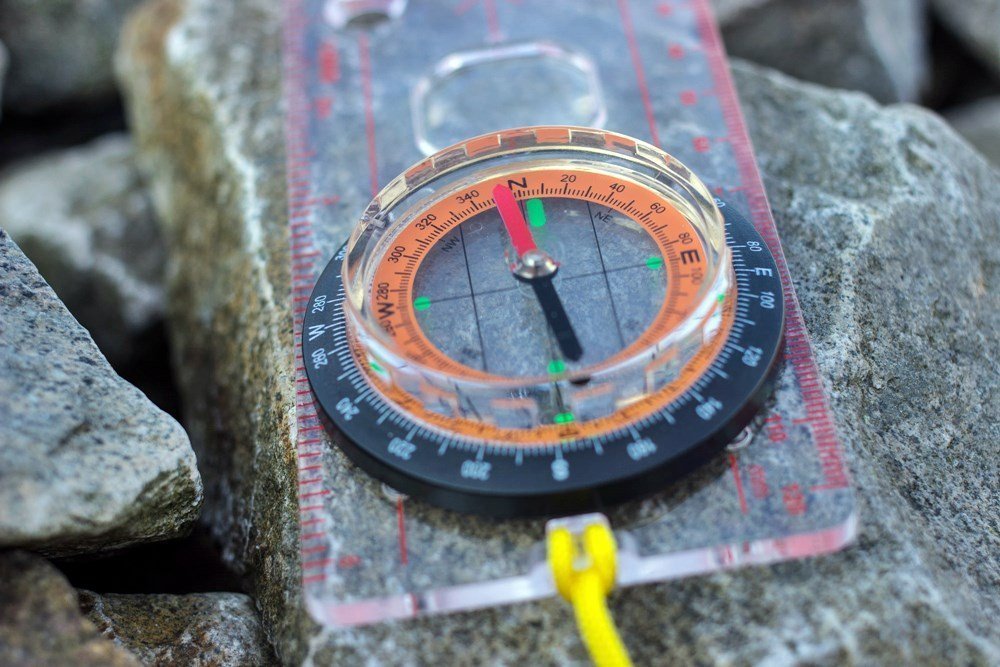Navigational Skills Cheap vs Expensive Compasses
By Dave Roberts ![]()
Navigational Skills Cheap vs Expensive Compasses
What counts as a decent brand of compass? We’ve used Silva, Suunto and Recta which tend to be quality compasses. I’ve a Suunto that’s now over 25 years old, it’s getting a bit dodgy, with something growing in the fluid, but still serves as an emergency compass.
We’ll compare a standard Silva Explorer compass, which is the compass usually recommended for any mountaineering course (and used by myself for the Mountain Leader award) against a similar looking compass that was advertised as being from Highlander but turned out to be unbranded, though there are many similar ones available on-line including identical looking ones from Gelert, and represent the typical penny pinching option that might be tempting to some. The likes of Vango and Karrimor also lend their name to generic compasses, so treat these with caution no matter how well made their tents are! One note on these generic compasses is that they seem to be variable in spec compared to what’s shown on-line as ours looked totally different – so it may well be possible that one of these variations is a real budget gem, but don’t hold your breath.
Silva also sell the lower specced – Field (short baseplate) and Ranger which is somewhere between the Field and Explorer, and an ideal first choice. Recta and Suunto are also well known brands, especially in the orienteering community, and are curved at one end in order to fit comfortably into the hand.
So how did they compare?
The feel of the cheap compass is rather nasty. By that, the needle just doesn’t seem to know where it’s going half the time. It does settle, eventually, on the same direction as the test compasses, but did require some coaxing and you could easily take a hasty bearing too early.
There are two sets of graduations – which I found confusing, but a matter of getting used to, and the index line wasn’t where I expected it to be – but one was present, under the needle rather than on the bezel where it’s easier to read. There isn’t a romer scale, but you usually only get those on expensive compasses anyway.

The housing is nice and deep, presumably this would work globally – which makes sense as it’s made in China to distribute globally.
The Silva, doesn’t have any of these issues – but isn’t globally useful (though I’m not going to go that far off route in Snowdonia, I hope!) I’ll admit that a lot of that would be down to familiarity. I’ve had to depend on this exact compass for serious micro navigation and winter walking and I have utter confidence in it being fit for purpose.
On the Hill
So the cheap compass doesn’t ‘feel’ right – but does it perform on the hill?
The taking of the bearing was rather slow – the needle doesn’t seem to want to point north and the index arrow and aligning to north isn’t so obvious as it is on the Silva or Suunto. So you get it to point North, and ignore the confusing set of graduations that you don’t want, and read the bearing from the other dial. If that’s confusing while we’re just taking a simple bearing for the purpose of testing the compass and getting a photograph or two, how much of an issue would that be when you really are dependent on this compass for getting off the mountain safely? Make no bones about it, your life could depend on that one single factor.
Feeling rather generous, lets put that down to this compass being slightly ‘different’ and that it’s a matter of getting used to the different markings. Is the bearing it takes accurate? It certainly isn’t fast and care needs to be taken for you to be certain it’s pointing North. All you can be certain of is that it’ll be pointing somewhere, until it settles down, and moves far too easily as you rotate the bezel. It seems the main pointer to a decent compass that the needle spun too freely on the cheap compass, but hardly moves at all when you move the bezel of a good compass. We had to give the Silva a good old spin of the bezel before we could get the needle to actually move! Hardly typical use.
And while we’re having a moan, we thought the little luminous points were generous, but they don’t even glow in the dark! It’s just fluorescent paint! The Silva, in good conditions, even allows you to read the bearing in the dark,
Would we recommend this on the hill?
As a magnifying glass or expensive ruler, you might have use for it, or as a very limited two-shaped stencil. In a real emergency, it would be better than nothing – though you could argue there that a compass that’ll point in the wrong direction is worse than no compass at all. The main issue was the time it took to settle on a bearing and how finicky it was once it got it, and promptly lost it again. You want to take a bearing as quickly as possible and with 100% confidence in it’s accuracy. This compass provides neither, and if you really think it’s worth paying £4 or so for one of these over a £12 starter compass from a known brand name then you really are too stingy for your own good.
![]()
Dave Roberts
More Posts By This Author

Tryfan South Ridge Grade 1 Scramble

Walk to Llyn Llywelyn from Rhyd Ddu






Comments are closed.